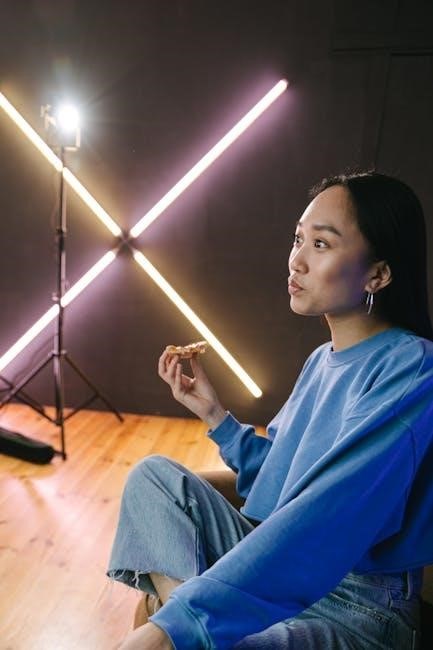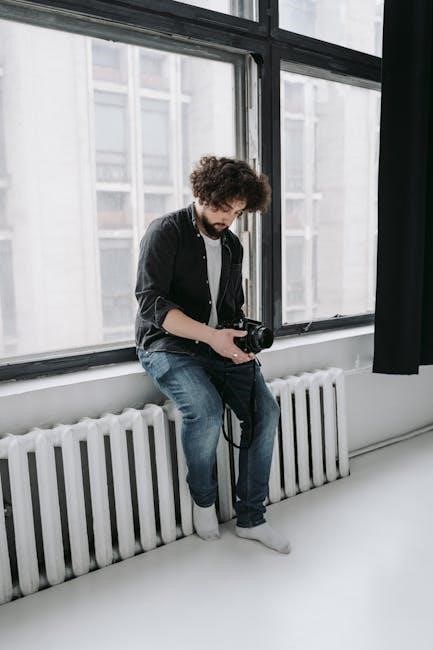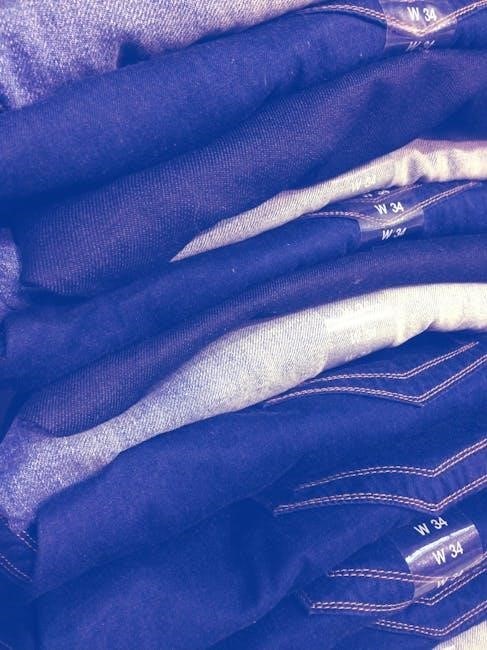Finding the perfect fit for FRAME jeans can be a breeze with the right guidance. This comprehensive guide helps navigate the complexities of FRAME denim sizing, ensuring you select jeans that fit like a glove. Let’s explore the nuances of FRAME’s sizing system.

General Sizing Information
FRAME jeans are celebrated for their sophisticated designs and comfortable fit, making them a popular choice for many. Generally, FRAME jeans run true to size; however, the exact sizing can vary depending on the style and wash. Understanding these variations is key to finding your perfect fit.
Most reviews regarding FRAME jeans highlight that determining your correct size from the FRAME jeans size chart can be tricky. Measuring your waist is the most reliable way to ensure a perfect fit. FRAME’s initial “Le One” collection offers skinny jeans in just two sizes: size 1 (fitting waists 23-28 inches) and size 2 (fitting waists 29-34 inches). While their waist sizing is relatively consistent, individual body shapes can influence the fit.
When shopping for FRAME jeans, consider the fit phenomenon the brand is known for. FRAME jeans blend stretch and structure, combining contemporary design with classic tailoring. This makes them suitable for various occasions, from casual outings to formal events. However, your personal experience with a brand’s fit depends heavily on your body shape. Sharing brands and styles that fit you well can provide a helpful reference for others or trying on different candidates to see what works best for you.
For those between sizes, it’s often recommended to choose the smaller size, especially for styles like “Le Original” and “Le Crop Mini Boot.” FRAME jeans should fit snugly at the waist, sitting comfortably without digging in. Most FRAME jean styles are designed to offer a bit of stretch for added comfort and flexibility.
Frame’s “Le One” Sizing

FRAME’s “Le One” jeans present a unique approach to sizing, designed to accommodate a broader range of body shapes with fewer sizes. This innovative design utilizes a revolutionary stretch fabric that molds to the body, offering a comfortable and flexible fit. The “Le One” collection initially launched with skinny jeans available in just two sizes:
- Size 1: Fits waists ranging from 23 to 28 inches.
- Size 2: Fits waists ranging from 29 to 34 inches.
This simplified sizing approach aims to eliminate the guesswork often associated with finding the right fit in traditional denim. The stretch fabric allows the jeans to adapt to various body shapes within the specified waist ranges. However, this can also present a conundrum for individuals who find themselves on the cusp between sizes. For example, someone who typically wears a size 29 might find themselves unsure whether to choose size 1 or size 2.
Personal accounts suggest that the “Le One” jeans can be particularly accommodating. The stretch fabric ensures a snug yet comfortable fit, adapting to the wearer’s unique contours. However, it’s essential to consider your body shape and personal preferences when selecting a size. If you prefer a tighter fit, sizing down might be an option, while those seeking a more relaxed feel might opt for the larger size.
While FRAME’s “Le One” sizing offers convenience, it’s crucial to measure your waist accurately to determine the best fit. This will help you align with the size range that corresponds to your measurements. The innovative stretch fabric of the “Le One” jeans provides flexibility, but accurate waist measurement is still the best way to achieve optimal comfort and style.
Comparing Fit Preferences
FRAME jeans are available in a variety of fits, each designed to cater to different body types and style preferences. Understanding the nuances of each fit is crucial in selecting the perfect pair that complements your figure and personal taste. Popular FRAME jean fits include skinny, straight, bootcut, and flared, each offering a unique silhouette and feel.

- Skinny Jeans: Known for their close-fitting style, skinny jeans hug the body from hip to ankle, creating a sleek and streamlined look. These jeans are perfect for showcasing your legs and pairing with a variety of tops and shoes. However, they may not be the most comfortable option for those who prefer a looser fit.
- Straight Jeans: Offering a classic and timeless silhouette, straight jeans feature a consistent width from the hip to the ankle. This fit is versatile and flattering on a variety of body types, providing a comfortable and relaxed feel; Straight jeans are a great everyday option that can be dressed up or down.
- Bootcut Jeans: Designed to balance proportions, bootcut jeans are fitted through the thigh and slightly flared from the knee down, creating a subtle A-line shape. This fit is ideal for wearing with boots, as the wider leg opening accommodates various boot styles. Bootcut jeans offer a flattering and elongating effect.
- Flared Jeans: Making a bold statement, flared jeans feature a wider leg opening that extends dramatically from the knee down. This fit is reminiscent of the 1970s and adds a touch of retro flair to any outfit. Flared jeans are best suited for those who want to create a dramatic and eye-catching look.
When comparing fit preferences, consider your body shape and the overall look you want to achieve. Skinny jeans emphasize the legs, while straight jeans offer a balanced silhouette. Bootcut jeans balance proportions, and flared jeans make a statement. Experimenting with different fits is essential in finding the perfect pair of FRAME jeans that suits your individual style and body type.
Measuring for the Perfect Fit
Accurate measurements are essential in determining the right size FRAME jeans for your body. Taking the time to measure your waist and hips ensures a comfortable and flattering fit, minimizing the risk of ordering the wrong size. Follow these steps to accurately measure yourself for FRAME jeans:
- Waist Measurement: Stand straight and relaxed, and locate the narrowest part of your torso, typically above your belly button and below your rib cage; Wrap a flexible measuring tape around your waist, ensuring it is parallel to the floor. The tape should be snug but not constricting. Record the measurement in inches.
- Hip Measurement: Stand with your feet together and measure around the fullest part of your hips, ensuring the measuring tape is parallel to the floor. This is usually around the widest point of your buttocks. The tape should be snug but not constricting. Record the measurement in inches.
Once you have your waist and hip measurements, consult FRAME’s size chart to determine the corresponding size. Keep in mind that FRAME jeans generally run true to size, but variations may occur depending on the specific style and wash. If you are between sizes, it is generally recommended to size up for a more comfortable fit.
In addition to waist and hip measurements, consider the rise and inseam of the jeans. The rise refers to the distance from the crotch seam to the top of the waistband, while the inseam refers to the length of the leg from the crotch seam to the hem. Choose a rise and inseam that complements your body type and desired style. High-rise jeans elongate the legs, while low-rise jeans sit lower on the hips. The inseam should be long enough to reach your ankle bone or slightly below, depending on your preference.
By accurately measuring your waist and hips, and considering the rise and inseam, you can confidently select the perfect size FRAME jeans that fit your body like a glove.
Size Conversion Guidelines
Navigating size conversions can be tricky, especially when dealing with international sizing standards. FRAME jeans primarily use US sizing, but understanding how these sizes translate to other systems like UK or European sizes is crucial for international customers or those familiar with different sizing conventions. Here’s a general guideline to help you convert sizes when purchasing FRAME jeans:
- US to UK: Generally, UK sizes are two sizes larger than US sizes. For example, a US size 4 would be a UK size 6. However, it’s always best to consult a specific size chart, as discrepancies can occur.
- US to EU: European sizes typically run higher than US sizes. A US size 4 might correspond to an EU size 36. Again, referring to the brand’s size chart is the most reliable method.
- International Waist Size Chart:
- US 23 ≈ UK 4 ≈ EU 32
- US 24 ≈ UK 6 ≈ EU 34
- US 25 ≈ UK 8 ≈ EU 36
- US 26-27 ≈ UK 10 ≈ EU 38
- US 28 ≈ UK 12 ≈ EU 40
- US 29 ≈ UK 14 ≈ EU 42
- US 30 ≈ UK 16 ≈ EU 44
- US 31 ≈ UK 18 ≈ EU 46
- US 32 ≈ UK 20 ≈ EU 48
Important Considerations:
- Check the Brand’s Size Chart: Always prioritize the specific size chart provided by FRAME; These charts account for the brand’s unique sizing variations and can prevent errors.
- Read Customer Reviews: Customer reviews often provide insights into sizing accuracy. If multiple reviewers suggest sizing up or down, it’s wise to consider their advice.
- Consider the Style: Different styles of FRAME jeans (e.g., skinny, boyfriend, bootcut) may fit differently. Skinny jeans might fit more snugly, while boyfriend jeans may have a looser fit.
- Measure Yourself: Take accurate waist and hip measurements and compare them to the size chart. This is the most reliable way to find the right size.
By using these size conversion guidelines and paying attention to the brand’s specific information, you can confidently choose the correct size FRAME jeans, regardless of your location or preferred sizing system.
Tips for Trying on Frame Jeans
Trying on jeans, especially from a premium brand like FRAME, requires a strategic approach to ensure the perfect fit and style. Here are some essential tips to guide you through the process, whether you’re shopping in-store or online:
- Wear Similar Clothing: When trying on jeans, wear clothing similar to what you would typically wear with them. For example, if you plan to wear the jeans with boots, wear boots during the try-on. This helps you visualize the complete look and assess the fit accurately.
- Check the Waist Fit: The waistband should sit comfortably on your waist without digging in or feeling too loose. You should be able to slide two fingers comfortably between your waist and the waistband. If it’s too tight, size up; if it’s too loose, size down or consider a different style.
- Assess the Hip and Thigh Fit: The jeans should fit smoothly over your hips and thighs without pulling or creating excess fabric. If you notice pulling, the jeans are likely too small. If there’s significant bunching or sagging, they’re probably too large.
- Consider the Length: The length of the jeans depends on the style. For skinny jeans, the hem should hit right at the ankle. For bootcut or flared jeans, the hem should skim the top of your shoes. If the length isn’t quite right, remember that alterations are an option.
- Move Around: Don’t just stand in front of the mirror. Sit down, bend over, and walk around to ensure the jeans are comfortable and allow for a full range of motion. Jeans that feel good while standing might not be comfortable during everyday activities.
- Check the Back View: Use a mirror to examine the fit from the back. The jeans should lift and flatter your rear without creating a “sagging” effect. Pockets should be proportionate and well-placed.
- Be Mindful of Stretch: Many FRAME jeans contain stretch fabric. Keep in mind that these jeans may relax slightly after a few wears. If the jeans feel slightly snug at first, they may stretch to a more comfortable fit.
- Trust Your Instincts: Ultimately, the best jeans are the ones that make you feel confident and comfortable. If you’re unsure about the fit, try on a few different sizes or styles to compare.
By following these tips, you can confidently try on FRAME jeans and find the perfect pair that fits your body and style.
Alteration Options
Even with careful sizing and trying on, sometimes jeans require alterations to achieve the perfect fit. Fortunately, FRAME jeans, known for their quality denim, are generally easy to alter. Here are common alteration options to consider:
- Hemming: Hemming is the most frequent alteration. If the jeans are too long, a tailor can shorten them to the desired length. Consider the type of shoes you’ll wear most often with the jeans when determining the hem length. For raw hems, which are popular with FRAME jeans, ensure the tailor maintains the original frayed edge or replicates it for a consistent look.
- Waist Adjustment: If the waist is too loose, a tailor can take it in. This involves altering the back seam to reduce the circumference. Conversely, if the waist is too tight, it’s sometimes possible to let it out slightly, though this depends on the seam allowance available.
- Tapering: Tapering adjusts the width of the leg. If you want a slimmer silhouette, a tailor can taper the leg from the knee down. This is common for straight-leg or bootcut jeans that you want to convert to a more fitted style.
- Seat Adjustment: The “seat” refers to the area around the rear. If the jeans are too baggy in the seat, a tailor can take in the fabric for a more contoured fit. Conversely, if the seat is too tight, letting it out might be possible, depending on the seam allowance.
- Replacing Hardware: Buttons and zippers can be replaced if they break or if you prefer a different style. A skilled tailor can seamlessly replace these elements to maintain the jeans’ original aesthetic.
- Adding Darts: For a more tailored fit, especially in the waist area, a tailor can add darts. Darts are small, tapered seams that remove excess fabric and create a more defined shape.

Tips for Successful Alterations:
- Choose a Skilled Tailor: Select a tailor experienced in working with denim and familiar with high-end brands like FRAME. Ask to see examples of their work and read reviews.
- Communicate Clearly: Clearly explain your desired outcome to the tailor. Use descriptive language and, if possible, bring a photo of jeans that fit you well as a reference.
- Try On Before and After: Try on the jeans before the tailor begins work to confirm the areas needing alteration. After the alterations, try them on again to ensure the fit meets your expectations.
- Consider the Fabric: Denim can behave differently depending on its weight and composition. Discuss any concerns with the tailor beforehand.
Alterations can significantly improve the fit and comfort of your FRAME jeans, making them a worthwhile investment for long-term wear.